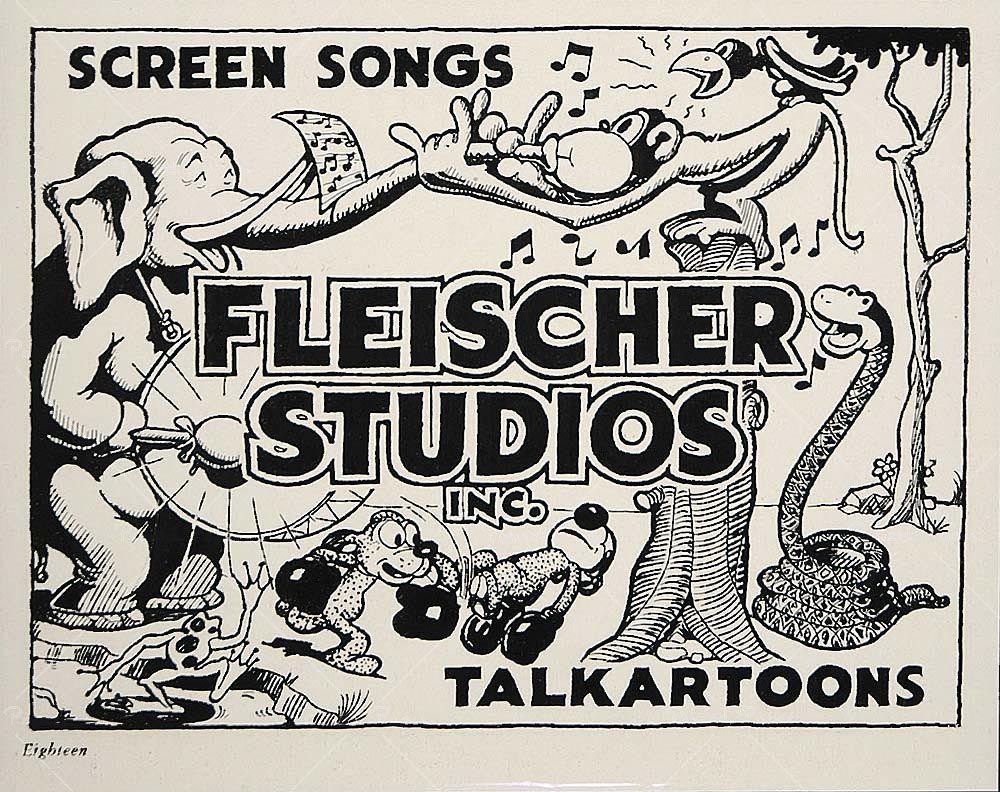Fleischer Studios is a name that resonates with animation enthusiasts and history buffs alike. Founded in the early 20th century, this studio significantly contributed to the evolution of animated films, particularly during the golden age of animation. In this article, we will explore the fascinating journey of Fleischer Studios, its innovative techniques, and the beloved characters that emerged from its creative hub.
The story of Fleischer Studios is one of creativity, resilience, and pioneering spirit. Established by brothers Max and Dave Fleischer in 1921, the studio quickly became known for its unique approach to animation that set it apart from its contemporaries. With iconic characters like Betty Boop and Popeye, Fleischer Studios played a pivotal role in shaping the entertainment landscape of its time.
In this comprehensive exploration, we will delve into the studio's history, its groundbreaking animation techniques, and its lasting legacy in the world of entertainment. From the studio's inception to its eventual decline, we will uncover the factors that contributed to its success and the challenges it faced along the way.
Table of Contents
- 1. History of Fleischer Studios
- 2. Founders and Key Figures
- 3. Innovations in Animation
- 4. Iconic Characters
- 5. Challenges Faced by the Studio
- 6. Legacy of Fleischer Studios
- 7. Data and Statistics
- 8. Conclusion
1. History of Fleischer Studios
Fleischer Studios was founded in New York City in 1921. Max Fleischer, an innovative animator, and his brother Dave, a talented artist and director, created the studio to produce animated shorts. Their unique style and creativity quickly garnered attention, leading to the creation of several successful series.
By the late 1920s, Fleischer Studios had established a reputation for its innovative approach to animation. The introduction of the "Rotoscope" technique allowed animators to trace over live-action footage, resulting in more fluid and realistic movements in animation. This groundbreaking method became a hallmark of Fleischer's style and set the studio apart from its competitors.
2. Founders and Key Figures
The driving force behind Fleischer Studios, Max and Dave Fleischer, were visionaries in the world of animation. Max, known for his inventive spirit, played a crucial role in developing many of the studio's signature techniques. Dave, on the other hand, was instrumental in directing and producing many of the studio's most beloved characters.
Key Figures in Fleischer Studios
- Max Fleischer - Co-founder and animator
- Dave Fleischer - Co-founder and director
- Grim Natwick - Animator known for creating Betty Boop
- Paul Terry - Influential figure in the animation industry
3. Innovations in Animation
Fleischer Studios was at the forefront of animation innovations during its heyday. One of their most significant contributions was the development of the Rotoscope technique, which allowed for more realistic animation by tracing over live-action footage. This technique was revolutionary and set a new standard in the animation industry.
Additionally, Fleischer Studios was known for its creative storytelling and musical integration in animated shorts. The studio often used synchronized sound and music to enhance the viewing experience, making their films more engaging and entertaining.
4. Iconic Characters
Throughout its history, Fleischer Studios introduced a multitude of iconic characters that captured the hearts of audiences. Some of the most notable characters include:
- Betty Boop: One of the first animated female characters, known for her flapper style and charming personality.
- Popeye: The spinach-loving sailor who became a cultural icon and symbol of strength.
- Koko the Clown: A character created by Max Fleischer that showcased the studio's innovative animation techniques.
5. Challenges Faced by the Studio
Despite its early success, Fleischer Studios faced numerous challenges in the later years. The rise of Disney and the increasing competition in the animation industry put pressure on the studio to innovate continuously. Financial difficulties and changes in the entertainment landscape also contributed to the studio's decline.
In 1941, Fleischer Studios was sold to Paramount Pictures, and the studio's creative direction shifted. The original magic of Fleischer Studios began to fade, leading to the eventual closure of the studio in 1955.
6. Legacy of Fleischer Studios
Today, Fleischer Studios is remembered as a pioneer in animation and a significant contributor to the art form. The studio's innovative techniques and beloved characters continue to influence animators and filmmakers worldwide.
Fleischer's legacy lives on through the characters and stories created by the studio. Betty Boop and Popeye remain cultural icons, representing the golden age of animation and the creativity of Fleischer Studios.
7. Data and Statistics
Fleischer Studios produced over 150 animated shorts and several feature films during its operation. Here are some key statistics:
- Founded: 1921
- Closed: 1955
- Notable Characters: Betty Boop, Popeye, Koko the Clown
- Innovative Techniques: Rotoscope, synchronized sound
8. Conclusion
Fleischer Studios holds a special place in animation history, showcasing creativity and innovation that shaped the industry. From its groundbreaking techniques to the iconic characters it introduced, the studio's impact is undeniable.
As we reflect on the legacy of Fleischer Studios, it's essential to appreciate the contributions of those who paved the way for future animators. If you're passionate about animation or interested in learning more about its history, leave a comment below and share your thoughts!
We invite you to explore more articles on our site to further delve into the world of animation and discover other captivating stories.
Thank you for joining us on this journey through the fascinating history of Fleischer Studios. We hope to see you back soon!



